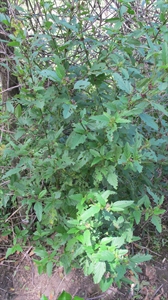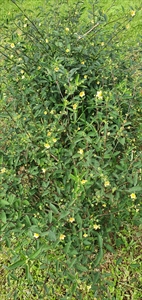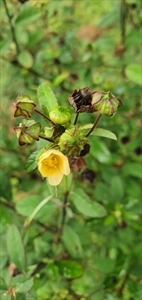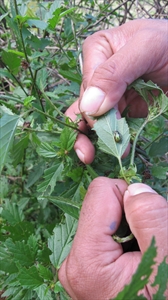- Widespread. Asia, Africa, North, South and Central America, Caribbean, Europe (restricted), Oceania. In most Pacific countries.
- Aggressive weed, particularly invasive in pastures and woodland-grasslands, but also in plantations, including forestry, cereal, root and vegetable crops, lawns, along waterways, in waste land and roadside. Prolific seed production over many different soil types, especially where environments are seasonally wet or dry. Cattle avoid the weed.
- Erect, branched, perennial shrub, 30-100 cm tall, woody stem, and long, tough taproot. Leaves, spear-shaped, saw-like margins, alternate along stem, with hairy leaf stalks. Flowers, light yellow to orange, five petals, and many stamens. Fruit, brown, hard, containing 5-8 wedged-shaped parts, each with two stiff bristles, and a seed inside.
- Spread: seed; fur of animals; vehicles; clothing; water; and as contaminant of hay.
- Biosecurity: high risk of introduction; One of the worst 10 weeds in New Caledonia, Solomon Islands and Vanuatu.
- Biocontrol: introduction of Calligrapha pantherina - Australia, Fiji, PNG, Vanuatu.
- Cultural control: dig or grub out, or plough, disc, harrow (before seed set), and repeat, or cultivate, then sow dense grass and legume pasture; avoid over-grazing pasture (maintain healthy growth); vehicle hygiene to remove seed.
- Chemical control: in Australia (pre-emergence): imazethapyr; pendimethalin; or imazapic; (post-emergence): imazethapyr; 2,4-D; fluroxypyr; or dicamba. In Fiji, glyphosate.










